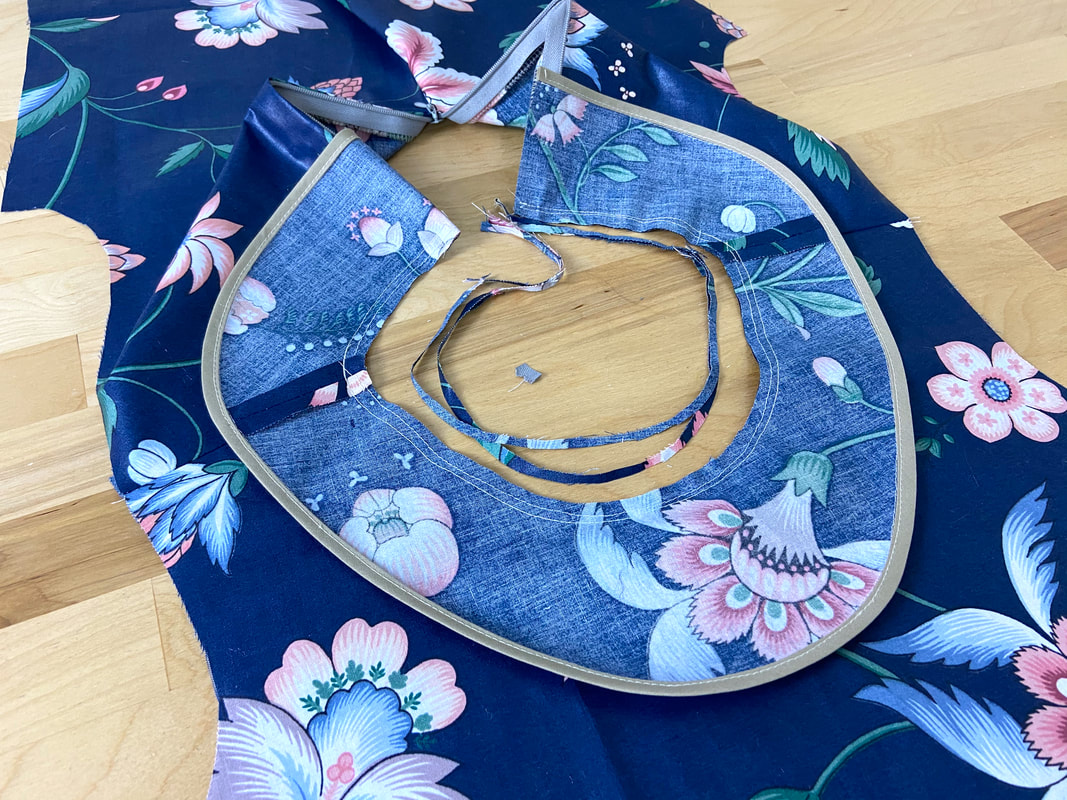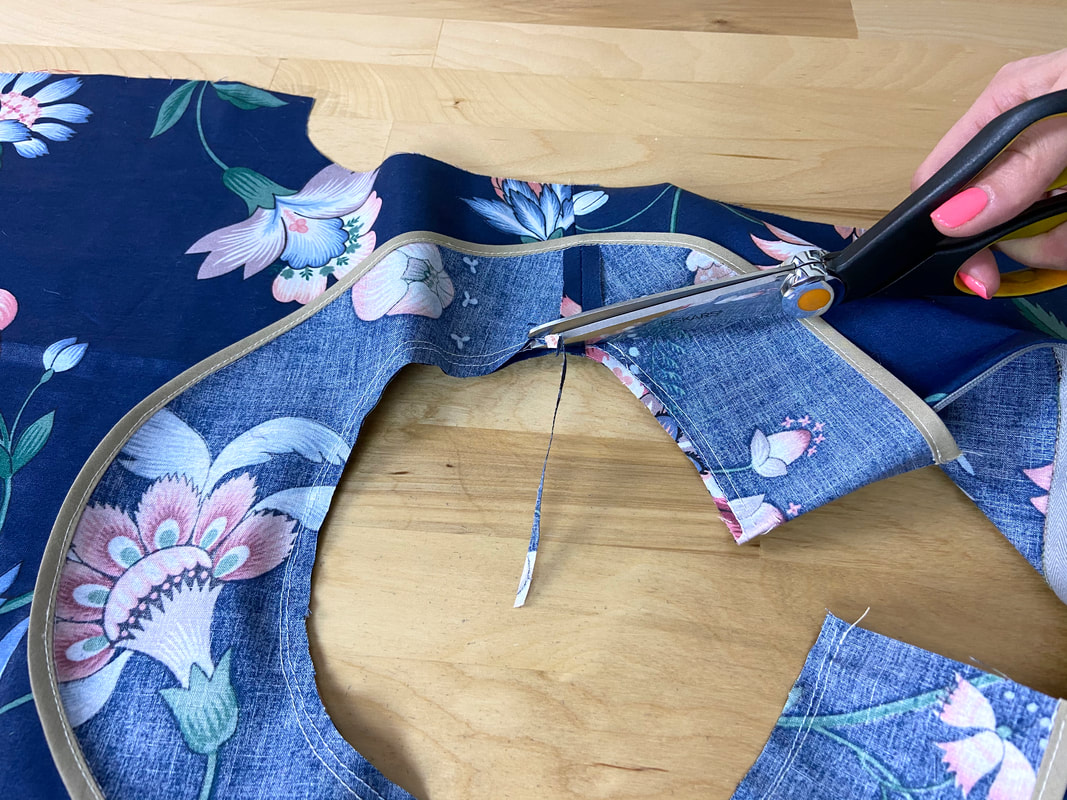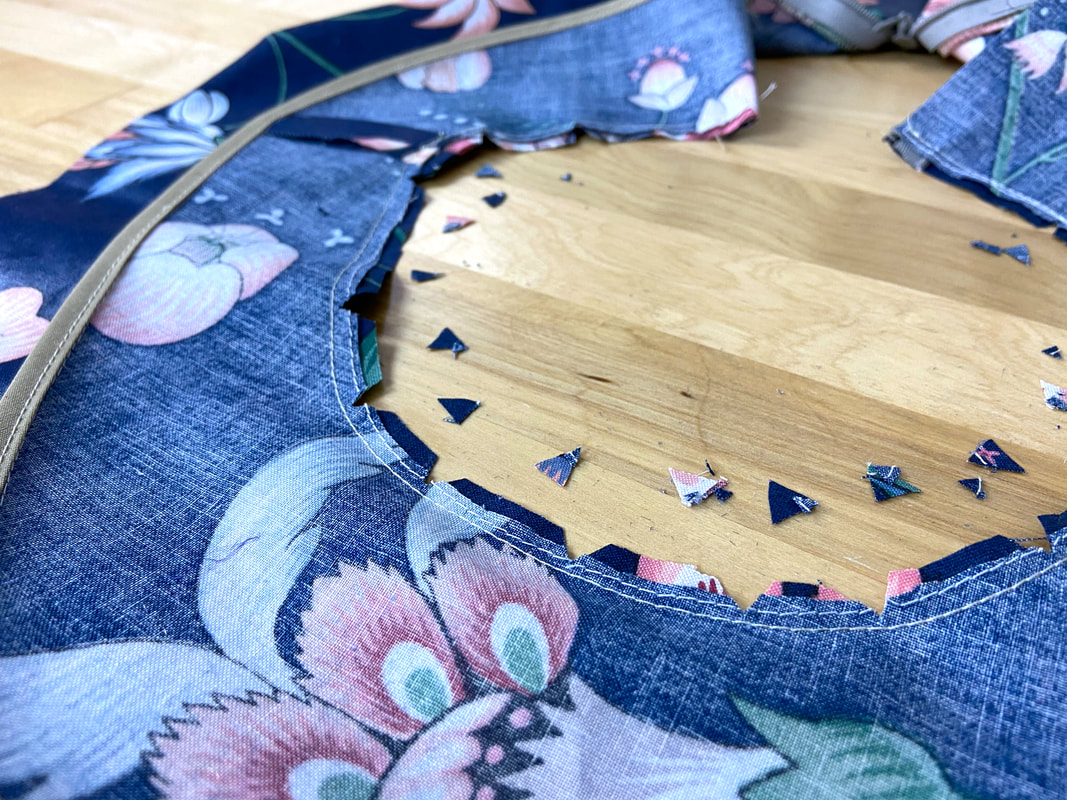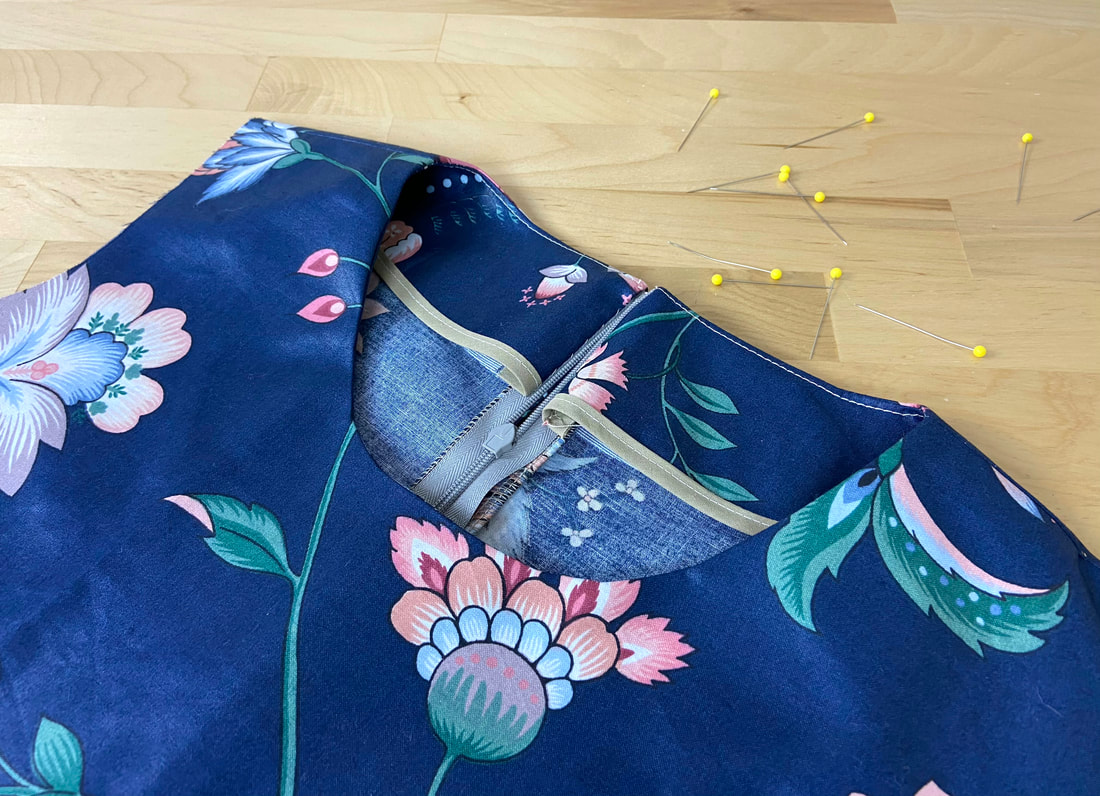How To Notch A Curved Neck Facing For Tension Release
Notching and trimming facing seam allowance layers, prior to flipping the facing compartment to the garment's wrong side, is essential in eliminating tension and allowing the finished edge to lay smooth, flat and well-defined.
While trimming and grading seam allowance layers should be done with all facing edges regardless of whether these are curved or straight, notching is needed only along curved portions. Notching is especially important when sewing curved necklines and handling faced armhole edges.
Here are the consecutive steps for treating the seam allowance edges of a curved faced neckline:
Here are the consecutive steps for treating the seam allowance edges of a curved faced neckline:
Once the facing has been aligned and stitched to the neckline edge, trim the seam allowance layers by about 1/8"-1/4" (depending on how wide your seam allowance is). In the example pictured above, the seam allowance is 1/2" thus about 1/8" was trimmed off.
To minimize bulk and eliminate extra thickness in the finished faced edge, trim the facing layer seam allowance down to half its width ( shown in the right-side image above). This technique is called grading and is especially useful when working with thicker fabrics. Grading thins out the seam allowance layers which naturally encourages the finished edges to layer flatter and smoother.
To minimize bulk and eliminate extra thickness in the finished faced edge, trim the facing layer seam allowance down to half its width ( shown in the right-side image above). This technique is called grading and is especially useful when working with thicker fabrics. Grading thins out the seam allowance layers which naturally encourages the finished edges to layer flatter and smoother.
At this point, if you attempt to turn the facing layer inward and expose the neckline's finished edge, you'll find that doing so is virtually impossible especially along the neckline's most curved area. In order to eliminate the tension that prevents the finished edge from laying flat, a technique called notching is used:
Clip wedge or triangle-shaped notches into the seam allowance layers, applying the notches closer together at the neckline's most curved areas (usually center front and center back). The notches should be cut close to the seam stitch but not so close that it weakens the seam, or you risk accidentally clipping the stitch. In addition to eliminating tension, the triangle cutouts serve as a way to remove additional bulk in the finished faced application.
Once notched, the facing layer naturally falls into place on the wrong side of the garment exposing a well-defined, smooth and flat curved edge. To complete the facing application, you should always iron the finished edges for a flat, professional finish.





